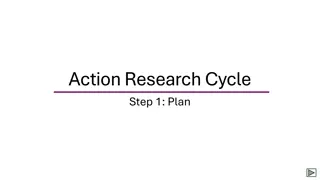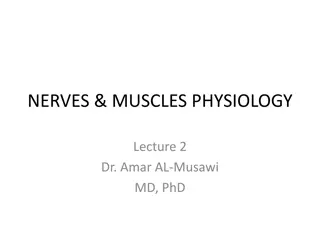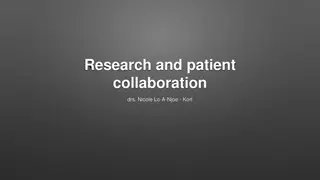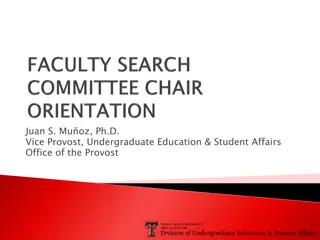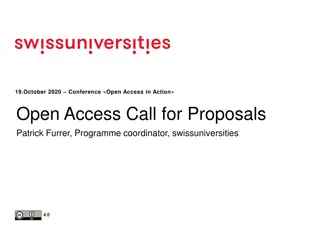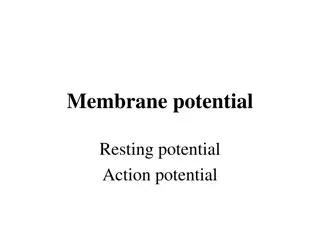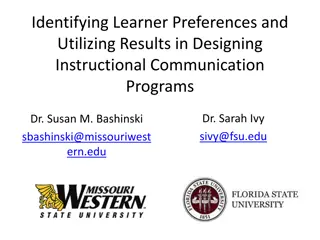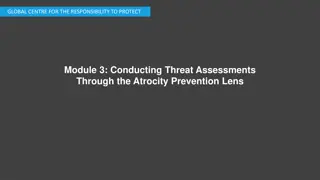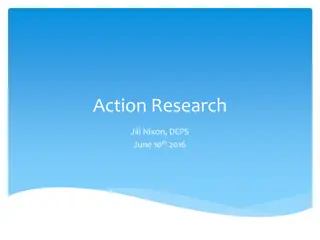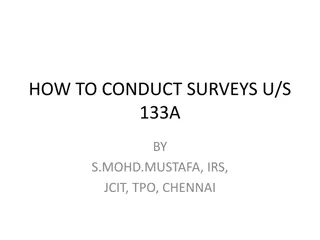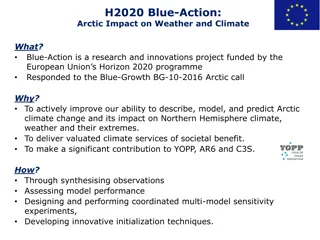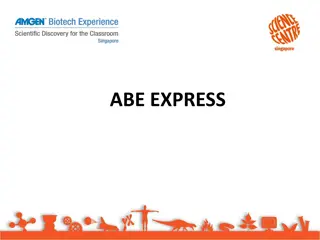Conducting Action Research in Deafblindness
Conducting Action Research in Deafblindness Webinar for NCDB & DVI-DB by Susan M. Bruce, Ph.D. from Boston College. Learn about the basic principles of action research, literature studies in deafblindness, and more.
Download Presentation

Please find below an Image/Link to download the presentation.
The content on the website is provided AS IS for your information and personal use only. It may not be sold, licensed, or shared on other websites without obtaining consent from the author.If you encounter any issues during the download, it is possible that the publisher has removed the file from their server.
You are allowed to download the files provided on this website for personal or commercial use, subject to the condition that they are used lawfully. All files are the property of their respective owners.
The content on the website is provided AS IS for your information and personal use only. It may not be sold, licensed, or shared on other websites without obtaining consent from the author.
E N D
Presentation Transcript
+ Conducting Action Research in Deafblindness Webinar for NCDB & DVI-DB Susan M. Bruce, Ph.D. Boston College
+Goals of this presentation Participants will understand and be able to apply the basic principles of action research in their work with children and young adults who are deafblind Participants will become familiar with some of the literature about action research studies in deafblindness Participants will have resources to learn more about action research in deafblindness
+What is action research? Problem solving form of research The intervention is not static Analysis is ongoing and impacts changes in the intervention (suitable to complex learners, complex problems, and complex contexts) The intervention changes according to findings Cycles of planning, action, and reflection (action research cycles)
+Types of action research Classroom (also known as teacher research or practitioner research) Collaborative Critical Participatory (Hendricks, 2016)
+Classroom Action Research Issue of importance involving one or more students Builds on abilities what the practitioner knows the student can do. Principles of classroom research can be applied outside of classrooms-to other settings May examine learning of students or teachers/therapists Examples Whole class: How do we support students to interact with each other and not just with adults? Individual: How can we teach Joe to answer in the affirmative (as in nodding head, signing yes .)
+Collaborative Action Research Involves someone outside of the classroom-an outside expert who brings knowledge about action research or the identified problem of concern Colleagues University partner Community group Success is dependent on: Voluntary participation Clearly established roles and responsibilities Clear communication Timelines-the action plan (discussed later)
+Critical Action Research Focuses on inequities; strong social justice orientation Also involves collaborators outside your setting (often members of community-advocates with experience on the topic of importance) Example: What can we do to make our municipal buildings more accessible to individuals who are deafblind? How can we make community events (such as story hour at the library) engaging for children who are deafblind?
+Participatory Action Research Individuals who are deafblind identify the problems of importance to study Individuals who are deafblind are co-researchers and co-writers their type and level of co-participation is self-determined. Self-determination and advocacy are foundational to participatory action research Emancipatory research may be considered a subset of participatory action research. Some consider it a 5th type of action research-the funding and POWER is held by individuals who are deafblind. PAR more appropriate to adults
+Identifying the Problem to Study Based on your observations of students Based on your data about student performance Based on teacher journals Based on parent concerns Are there actions you can take to address this problem? Are there definable outcomes? If yes to both you have a problem that can be translated into a researchable question. Don t select a problem that is too big or broad (such as Why isn t my student learning?)
+Examples of identified problems in authentic AR in DB Studies Adolescent students in our school do not interact with younger students. One even runs away from younger students, possibly because they are unpredictable. Our secondary students with visual impairments and deafblindness are asking their parents about service dogs (including guide dogs) and the parents are worried because they are not yet helping with their pets at home. Calvin very seldom initiates communication.
+Forming a good research question Do not use questions that can be answered with yes or no. Be as specific as possible and you may want to use sub-questions to get at the specifics. Take ownership of your research question: Use I , my , we , or our
+Examples of research questions from a collaborative action research study Socialization study involving dyadic interactions of different-aged students How will interactions between older students with CHARGE syndrome and young students with mixed etiologies of deafblindness change over time, in the context of an engineered interaction space? Sample sub-questions: What socialization goals will older students select? What types of feedback will older students give each other (after viewing the interaction videos)?
+Examples of Research Questions from Collaborative Action Research Study Positive Behavior Support study that generated individualized behavior profiles with supports What positive behavior supports are most effective with each of the young adults who are deafblind? Sample sub-questions: Which strategies are important to preventing a negative behavior and which are important to addressing a negative behavior (proactive/reactive)?
+Examples of Research Questions from a Participatory Action Research Study PAR study in Washington DC How will participant/co-researchers describe effective change agents? How will participant/co-researchers describe their own development as change agents? How will participant/co-researchers think about their various advocacy roles (self and political)
+Planning the Intervention Review your existing data before developing your intervention. Consider what has been tried already. Develop an initial intervention that addresses your research question(s) Change your intervention in response to data. Consult professional journals and websites for ideas about interventions. Collaborate with colleagues about interventions.
+Fidelity of your intervention Consistency in delivery of the intervention-across people and intervention sessions/lessons Joint lesson plans Training on the intervention Checklists Videotape staff delivering the intervention. Review and rate for fidelity.
+Examples of Interventions from AR Studies in DB (1 of 2) Humane Education Study: An after school course on humane education with key experiences with a service dog (feeding, brushing teeth, picking up waste, play, walking ) Socialization Study (different aged dyads): Using structured play spaces, goal-setting, preview and review of goals, student self-evaluation to improve interactions of adolescent students with elementary students-dyadic interactions.
+Examples of Interventions from AR studies in DB (2 of 2) Positive Behavior Support Study: Applying principles of Cognitive Behavior Therapy and literature on environmental considerations/arrangements and sensory needs of students who are db, and individualized profiles to improve behavior PAR study-course on advocacy and becoming a change agent (included experience with developing a policy brief and participant/co- researchers meetings with congressmen/women)
+Identifying Data Sources Field notes Observation videos or notes Pre/Post tests or surveys Pre/post interviews Teacher and therapist journals about the intervention Task analyses Written documents created outside of study: IEP, behavior plans Written documents created for the study: action plans, profiles on communication or behavior .
+Environmental Engineering & Sensory Sensitivity: Sample Flip Chart Data from Staff Discussion of Joe (Positive Behavior Support study)
+Data Source-Photograph: Exploring Norms Crate from the Humane Education Study
+Data Source-Photo: PAR Participant/Co- researchers Engaging in Political Advocacy
+Collecting Data Before collecting data: Do you need consent forms from parents? Who will collect the data? Where will it be stored (in a way that protects student privacy?) How often will it be shared and reviewed with each other? In collaborative action research studies involving multiple interventionists-how will you know when it might be time to change the intervention?
+Goal of Data Analysis The goal of any data analysis is to reduce vast amounts of data into smaller, more manageable sets of information (Mertler, 2017, p. 171).
+Analyzing Quantitative Data Deductive process Gather all of your quantitative data sources Create displays of your data (line graphs, bar graphs ) Take notes about how each data source relates to your research question(s) Quantitative data may be simple counts
+Quantitative Analysis: Very basic descriptive statistics Measures of central tendency: Mean (average) Mode (most common score/rating) Median (score in middle) (not often relevant to AR in DB) Measures of variability: Range of scores (such as 4-20 minutes on task) Standard deviation (distance from mean-not often relevant to AR in DB)
+Analyzing Qualitative Data Inductive process Read and re-read your data source (such as journal or observation notes). Write memos/notes about the data Identify key themes/categories Be clear about the connection between each theme and your research question(s) Account for all data. Trustworthiness of your findings-have colleagues review your analysis. Member checks when possible. Keep clear records of your analysis.
+Identifying key findings Your key findings should all directly connect to your research question(s) Quantitative findings may include simple counts. For example, counting how many times a child engaged in a particular positive or negative behavior. Qualitative findings will help you to get to the whys behind what is occurring-these findings will help you to see the influence of context (including adults and peers in the setting).
+Example of Quantitative Findings on Communication Initiations of Boy with CHARGE
+Sample of Qualitative Data on Teaching Strategies from the Same Study Provide highly motivating context Create opportunities to communicate (with exs.). Close physical proximity of communication partner Repeated naming of the representation/symbol Pair objects with line drawings Drop background color of line drawings-to draw his attention to the drawing itself
+Sample Qualitative Data from the Positive Behavior Support Study: 8 Themes Provide structure (physical space and lessons) Support students to cope with anxiety Address students sensory needs Support on task behavior Support transitions between activities and environments Support mature behavior (defined as adult-like & cooperative-we used mature behavior sheets & self evals) Establish and maintain a positive climate Adult language supports positive behaviors
+Reflecting and taking action(s) based on findings: Subsequent action cycles Example from the socialization study with different age dyads Joint attention issues were apparent, such as: gaining visual attention of peer, impact of positioning on peer attention, allowing appropriate amount of wait time (due to visual latency). Changes in intervention included more sitting at table with peer and teaching one adolescent to count silently for wait time.
+Reflecting and taking actions based on findings: Subsequent action cycles Communication Initiations study-changing representation to encourage initiation-the data told us he was more accurate in selecting a line drawing if it did NOT have the feature of color. So, we removed color.
+Disseminating Findings Share findings with immediate team members Share findings at staff meetings Present at your school or at conferences Full feature article, research report, or practice report for Journal of Visual Impairment & Blindness Article for Visual Impairment & Deafblind Education (VIDBQ) (previously DVI Quarterly) Article for DbI Magazine (DbI = Deafblind International) Possibly for websites such as NCDB or Perkins Other ideas?
+Resources and References (1 of 3) Bruce and others (2016-2017). Series of 6 articles on how to conduct action research with individuals who are deafblind in DbI Magazine. Bruce, S. M., Feinstein, J. D., Kennedy, M., & Liu, M. (2015). Humane education for students with visual impairments: Learning about working dogs. Journal of Visual Impairment & Blindness, 109, 279-290. Bruce, S. M. & Parker, A. T. (2012). Young deafblind adults in action: Become self-determined change agents through advocacy. American Annals of the Deaf, 157, 16-26.
+Resources and References (2 of 3) Bruce, S. M. & Pine, G. J. (2010). Action research in special education: An inquiry approach for effective teaching and learning. New York: Teachers College Press. Bruce, S. M., Zatta, M., Gavin, M. & Stelzer, S. (2016). Socialization and self-determination in different age dyads of students who are deafblind. Journal of Visual Impairment & Blindness, 110, 149-161. Deafblind International-Research Network-Action Research Work Group (Contact me if you re interested in joining the network and this research group.)
+Resources and References (3 of 3) Hendricks, C. (2016). Improving schools through action research: A reflective practice approach (4th edition). Upper Saddle River, NJ: Pearson. Mertler, C. A. (2017). Action research: Improving schools and empowering educators. Fifth Edition. Los Angeles: Sage. Nannemann, A. C., Bruce, S. M., & Covelli, A. (2017). Positive behavior supports for a young woman with CHARGE syndrome. Journal of Visual Impairment & Blindness, 111, 175-180.


